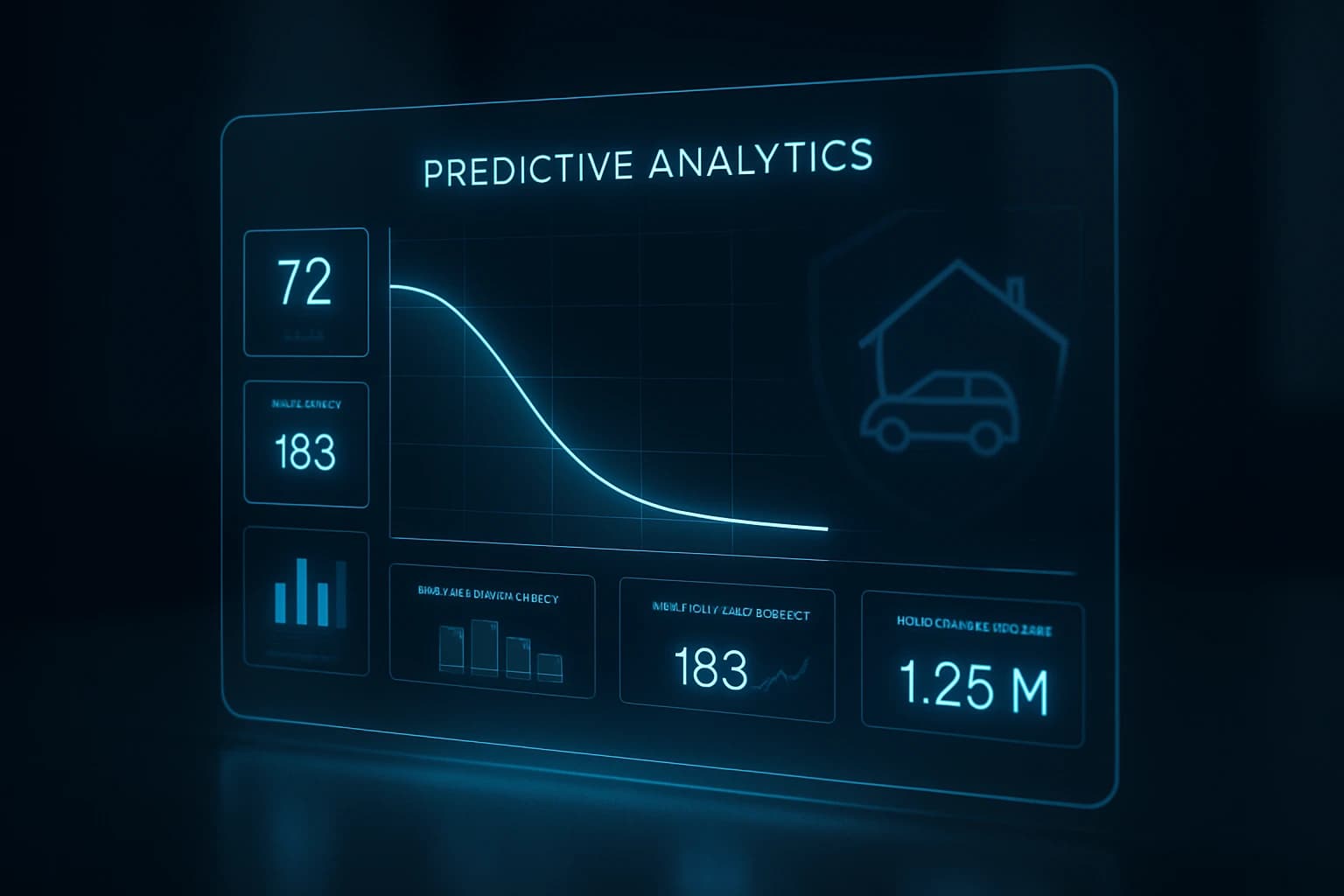In today's data-driven business environment, enterprise organizations are generating, collecting, and storing more data than ever before. However, the sheer volume and complexity of this data often create significant challenges for organizations trying to extract value from their data assets. Many enterprises find themselves in a situation where they have vast amounts of data but struggle to find, understand, and use it effectively.
This is where data discovery becomes critical—a comprehensive approach that helps organizations locate, understand, and leverage their data assets to drive better business outcomes. Data discovery is not just about finding data; it's about creating a systematic approach to understanding what data exists, where it's located, how it's structured, and how it can be used to create business value.
What is Data Discovery?
Data discovery is the process of identifying, cataloging, and understanding data assets across an organization. It involves systematically exploring data sources, understanding data relationships, and creating a comprehensive view of available data that enables users to find and use the right data for their specific needs.
Key Components of Data Discovery
- Data Cataloging: Creating a comprehensive inventory of data assets
- Data Profiling: Understanding data structure, quality, and content
- Data Lineage: Tracking data origins and transformations
- Data Relationships: Mapping connections between different data sources
- Data Governance: Establishing policies and controls for data usage
The Enterprise Data Challenge
1. Data Volume and Complexity
Modern enterprises face unprecedented data challenges:
- Exponential Growth: Data volumes doubling every 18-24 months
- Multiple Sources: Data scattered across hundreds of systems and platforms
- Various Formats: Structured, unstructured, and semi-structured data
- Different Technologies: Legacy systems, cloud platforms, and modern databases
2. Data Silos and Fragmentation
Organizational and technical barriers create data silos:
- Departmental Barriers: Different business units managing their own data
- Technology Barriers: Incompatible systems and data formats
- Geographic Barriers: Data distributed across multiple locations
- Regulatory Barriers: Compliance requirements limiting data sharing
3. Data Quality and Trust Issues
Poor data quality undermines confidence:
- Inconsistent Data: Different definitions and formats for the same concepts
- Data Duplication: Multiple copies of the same data with different values
- Missing Information: Incomplete data sets and missing values
- Outdated Data: Stale information that no longer reflects current reality
Why Data Discovery Matters for Enterprises
1. Improved Decision Making
Access to Complete Information
Data discovery enables organizations to:
- Find Relevant Data: Quickly locate data needed for specific decisions
- Understand Data Context: Know what data means and how it was created
- Identify Data Gaps: Recognize when additional data is needed
- Make Informed Choices: Base decisions on comprehensive, accurate information
Example: A retail enterprise uses data discovery to identify customer purchase patterns across multiple channels, enabling more accurate demand forecasting and inventory optimization decisions.
Data-Driven Culture
Organizations can build:
- Evidence-Based Decisions: Make choices based on data rather than intuition
- Faster Response Times: Respond quickly to market changes with data insights
- Better Risk Assessment: Understand risks through comprehensive data analysis
- Strategic Planning: Develop strategies based on data-driven insights
2. Enhanced Operational Efficiency
Reduced Data Search Time
Data discovery eliminates:
- Manual Data Hunting: Time spent searching for relevant data
- Duplicate Efforts: Multiple teams recreating the same data sets
- Data Reconciliation: Time spent resolving data inconsistencies
- Decision Delays: Waiting for data to be located and prepared
Streamlined Processes
Organizations can:
- Automate Data Access: Self-service access to approved data sets
- Standardize Data Usage: Consistent approaches to data analysis
- Improve Collaboration: Share data insights across teams
- Accelerate Projects: Faster project completion with better data access
3. Better Data Governance
Comprehensive Data Understanding
Data discovery provides:
- Data Inventory: Complete catalog of all data assets
- Data Lineage: Understanding of data origins and transformations
- Data Quality Assessment: Evaluation of data accuracy and completeness
- Data Usage Tracking: Monitoring of how data is accessed and used
Regulatory Compliance
Organizations can better meet:
- Data Privacy Requirements: Understanding what personal data exists and where
- Audit Requirements: Providing evidence of data handling practices
- Industry Regulations: Meeting specific industry compliance requirements
- Data Retention Policies: Managing data lifecycle and retention
4. Increased Data Value
Unlocking Hidden Insights
Data discovery reveals:
- Data Relationships: Connections between different data sources
- Pattern Recognition: Identifying trends and patterns across data sets
- Opportunity Identification: Finding new ways to use existing data
- Innovation Potential: Discovering data-driven innovation opportunities
Better Data Utilization
Organizations can:
- Maximize Data ROI: Get more value from existing data investments
- Reduce Data Redundancy: Eliminate duplicate data storage and processing
- Improve Data Quality: Identify and address data quality issues
- Enable Self-Service Analytics: Empower users to find and analyze data independently
Key Capabilities of Enterprise Data Discovery
1. Automated Data Cataloging
Intelligent Data Scanning
- Source Discovery: Automatically identify data sources across the enterprise
- Schema Detection: Understand data structure and relationships
- Metadata Extraction: Capture comprehensive metadata about data assets
- Change Detection: Monitor for changes in data sources and structures
Data Profiling and Analysis
- Content Analysis: Understand what data contains and its quality
- Pattern Recognition: Identify data patterns and anomalies
- Statistical Analysis: Provide statistical summaries of data characteristics
- Data Quality Scoring: Assess and score data quality automatically
2. Advanced Search and Discovery
Intelligent Search Capabilities
- Natural Language Search: Find data using plain English queries
- Semantic Search: Understand search intent and context
- Fuzzy Matching: Find data even with incomplete or incorrect search terms
- Relevance Ranking: Prioritize search results by relevance
Discovery Recommendations
- Related Data Suggestions: Recommend related data sets and sources
- Usage Pattern Analysis: Suggest data based on usage patterns
- Collaborative Filtering: Recommend data based on what similar users access
- Trend Analysis: Identify trending data sets and topics
3. Data Lineage and Impact Analysis
Comprehensive Lineage Tracking
- Source to Target Mapping: Track data from source systems to final destinations
- Transformation Tracking: Understand how data is modified and processed
- Dependency Mapping: Identify dependencies between data sets
- Impact Analysis: Assess the impact of changes to data sources
Data Flow Visualization
- Interactive Lineage Maps: Visual representation of data flows
- Change Impact Assessment: Understand how changes affect downstream systems
- Data Dependency Analysis: Identify critical data dependencies
- Risk Assessment: Evaluate risks associated with data changes
4. Data Quality and Governance
Quality Assessment and Monitoring
- Automated Quality Checks: Continuous monitoring of data quality
- Quality Metrics: Comprehensive quality scoring and reporting
- Issue Detection: Automatic identification of data quality problems
- Quality Trends: Track data quality improvements over time
Governance and Compliance
- Access Control: Manage who can access specific data sets
- Usage Monitoring: Track how data is accessed and used
- Compliance Reporting: Generate reports for regulatory compliance
- Policy Enforcement: Automatically enforce data governance policies
Implementation Strategies for Enterprise Data Discovery
1. Assessment and Planning
Current State Analysis
- Data Inventory Assessment: Evaluate current data assets and sources
- Technology Stack Review: Assess existing data infrastructure and tools
- Process Analysis: Understand current data discovery and usage processes
- Stakeholder Identification: Identify key stakeholders and their needs
Target State Definition
- Discovery Requirements: Define specific discovery capabilities needed
- Technology Architecture: Design target data discovery architecture
- Implementation Roadmap: Develop a phased implementation plan
- Success Metrics: Define how success will be measured
2. Technology Selection and Implementation
Platform Evaluation
- Feature Requirements: Assess platforms against specific requirements
- Integration Capabilities: Evaluate integration with existing systems
- Scalability Requirements: Ensure the platform can handle enterprise data volumes
- Vendor Assessment: Evaluate vendor capabilities and support
Implementation Approach
- Phased Rollout: Implement capabilities incrementally
- Pilot Projects: Test capabilities with focused use cases
- User Training: Provide comprehensive training for end users
- Change Management: Manage organizational change effectively
3. Data Governance and Quality
Governance Framework
- Policy Development: Establish data governance policies and procedures
- Role Definition: Define roles and responsibilities for data management
- Process Documentation: Document data discovery and usage processes
- Compliance Monitoring: Implement monitoring for governance compliance
Quality Management
- Quality Standards: Establish data quality standards and metrics
- Quality Monitoring: Implement continuous quality monitoring
- Issue Resolution: Develop processes for addressing quality issues
- Quality Improvement: Continuously improve data quality
4. User Adoption and Training
User Experience Design
- Intuitive Interface: Design user-friendly discovery interfaces
- Role-Based Views: Customize views based on user roles
- Search Optimization: Optimize search capabilities for user needs
- Mobile Access: Provide access from mobile devices
Training and Support
- Comprehensive Training: Provide training for all user types
- Documentation: Create user guides and documentation
- Support Processes: Establish support processes for users
- Continuous Learning: Provide ongoing training and updates
Technology Considerations
1. Data Discovery Platforms
Enterprise Platforms
- Collibra: Enterprise data governance and discovery platform
- Alation: Data catalog and discovery platform
- Informatica: Enterprise data management with discovery capabilities
- IBM Watson Knowledge Catalog: AI-powered data discovery and governance
Cloud-Native Solutions
- AWS Glue Data Catalog: Managed data catalog service
- Azure Purview: Unified data governance and discovery
- Google Cloud Data Catalog: Managed data discovery and metadata management
- Snowflake Data Marketplace: Data sharing and discovery platform
2. Integration and Connectivity
Data Source Connectivity
- Database Connectors: Connect to various database systems
- API Integration: Integrate with REST and GraphQL APIs
- File System Access: Access data stored in file systems
- Cloud Storage Integration: Connect to cloud storage platforms
System Integration
- ETL/ELT Tools: Integrate with data processing tools
- Business Intelligence Platforms: Connect with BI and analytics tools
- Data Science Platforms: Integrate with machine learning platforms
- Workflow Tools: Connect with business process management tools
3. Security and Compliance
Security Features
- Authentication and Authorization: Secure access to data discovery tools
- Data Encryption: Protect sensitive data during discovery
- Audit Logging: Track all discovery activities and access
- Data Masking: Protect sensitive data during discovery
Compliance Capabilities
- Regulatory Compliance: Support for various compliance requirements
- Data Privacy: Protection of personal and sensitive data
- Audit Support: Comprehensive audit trail and reporting
- Policy Enforcement: Automated enforcement of governance policies
Measuring Success and ROI
1. Quantitative Metrics
Efficiency Improvements
- Time to Data: Reduction in time to find relevant data
- Data Usage: Increase in data utilization across the organization
- Project Acceleration: Faster project completion with better data access
- Cost Reduction: Reduction in data-related costs and inefficiencies
Quality Improvements
- Data Quality Scores: Improvement in data quality metrics
- Error Reduction: Reduction in data-related errors and issues
- Compliance Improvement: Better compliance with governance policies
- User Satisfaction: Improvement in user satisfaction scores
2. Qualitative Benefits
Strategic Value
- Better Decision Making: Improved quality of business decisions
- Innovation Enablement: New opportunities for data-driven innovation
- Competitive Advantage: Improved competitive position through better data use
- Risk Reduction: Better risk management through comprehensive data understanding
Organizational Impact
- Cultural Change: Shift to data-driven decision making
- Collaboration Improvement: Better collaboration across teams
- Knowledge Sharing: Improved sharing of data insights and knowledge
- Agility Enhancement: Increased organizational agility and responsiveness
Challenges and Considerations
1. Technical Challenges
Data Complexity
- Volume Management: Handling large volumes of data efficiently
- Variety Handling: Managing diverse data types and formats
- Velocity Processing: Processing high-speed data streams
- Quality Assurance: Ensuring data quality across diverse sources
Integration Complexity
- System Compatibility: Ensuring compatibility with existing systems
- Data Format Standardization: Standardizing diverse data formats
- Performance Optimization: Optimizing performance for large-scale operations
- Scalability Planning: Planning for future growth and expansion
2. Organizational Challenges
Change Management
- Cultural Resistance: Overcoming resistance to new approaches
- Skill Gaps: Developing necessary technical and analytical capabilities
- Process Changes: Adapting existing processes to new capabilities
- Stakeholder Buy-in: Gaining support from key decision makers
Resource Requirements
- Technology Investment: Funding for new tools and infrastructure
- Skill Development: Training and development of team members
- Ongoing Support: Continuous maintenance and enhancement
- Change Management: Resources for managing organizational change
3. Governance and Compliance
Policy Development
- Governance Framework: Establishing comprehensive governance policies
- Compliance Requirements: Meeting various regulatory requirements
- Policy Enforcement: Implementing and enforcing governance policies
- Audit Support: Supporting internal and external audits
Risk Management
- Data Security: Protecting sensitive data during discovery
- Privacy Protection: Ensuring compliance with privacy regulations
- Access Control: Managing who can access specific data
- Usage Monitoring: Monitoring how data is accessed and used
Future Trends in Enterprise Data Discovery
1. AI and Machine Learning Integration
Intelligent Discovery
- Automated Data Profiling: AI-powered data understanding and profiling
- Smart Recommendations: Intelligent suggestions for data discovery
- Pattern Recognition: Automatic identification of data patterns and relationships
- Predictive Analytics: Predicting data usage patterns and needs
Natural Language Processing
- Conversational Discovery: Natural language queries for data discovery
- Semantic Understanding: Better understanding of user intent and context
- Automated Documentation: Automatic generation of data documentation
- Intelligent Search: Enhanced search capabilities with NLP
2. Real-Time and Streaming Discovery
Live Data Discovery
- Real-Time Cataloging: Continuous discovery of new data sources
- Streaming Data Support: Discovery capabilities for streaming data
- Live Quality Monitoring: Real-time data quality assessment
- Instant Impact Analysis: Immediate understanding of data changes
Dynamic Discovery
- Adaptive Catalogs: Catalogs that adapt to changing data landscapes
- Automatic Updates: Continuous updates to data discovery information
- Change Detection: Automatic detection of data source changes
- Proactive Alerts: Early warning of data-related issues
3. Enhanced Collaboration and Sharing
Collaborative Discovery
- Team Workspaces: Collaborative environments for data discovery
- Knowledge Sharing: Sharing of data insights and discoveries
- Community Features: Building communities around data discovery
- Social Discovery: Social features for data discovery and sharing
Data Marketplace
- Internal Marketplaces: Internal platforms for data sharing and discovery
- External Data Sources: Integration with external data providers
- Data Monetization: Opportunities to monetize data assets
- Partner Collaboration: Collaboration with external partners
Conclusion
Data discovery is not just a technical capability—it's a strategic imperative for enterprise organizations that want to maximize the value of their data assets. By implementing comprehensive data discovery capabilities, organizations can improve decision-making, enhance operational efficiency, ensure better data governance, and unlock the full potential of their data investments.
The key to success with enterprise data discovery is to:
- Start Strategically: Begin with clear objectives and comprehensive planning
- Focus on User Experience: Design intuitive and user-friendly discovery capabilities
- Build Strong Governance: Establish comprehensive data governance frameworks
- Invest in Technology: Choose appropriate technology platforms and tools
- Manage Change Effectively: Plan for organizational change and user adoption
As enterprises continue to generate and collect more data, the ability to discover, understand, and leverage this data effectively will become a critical competitive advantage. Organizations that successfully implement data discovery capabilities will be better positioned to make informed decisions, respond quickly to changing conditions, and create value from their data assets.
The journey to effective enterprise data discovery may require significant investment in technology, processes, and organizational change, but the benefits in terms of improved decision-making, operational efficiency, and data value make it a worthwhile investment for organizations committed to data-driven success.
Ready to transform your enterprise data discovery capabilities? → Learn More → Contact us


